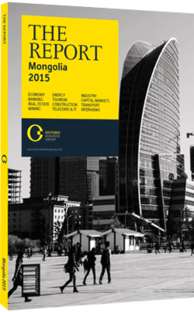Mongola's efforts to bolster shrinking foreign exchange reserves
Foreign direct investment (FDI) financed the current account deficit (CAD) in the boom years, but the FDI drop since 2012 has compounded balance of payment (BoP) pressures. While the CAD has narrowed, the fall in FDI inflows has sustained the tugrik’s devaluation. Expansionary monetary policy from the Bank of Mongolia (BOM) helped provide a soft landing for the economy and prevent an economic crisis, but forced the bank to intervene in the foreign exchange (FX) market.
Pressure Valve
Mongolia’s currency has acted as a pressure valve amidst rising BoP pressures, as falling FDI has made it more challenging to finance the CAD. Inward FDI slumped by 17% year-on-year (y-o-y) in 2012, 52% in 2013 and 62% y-o-y in the first half of 2014. Yet after swelling from 14.3% of GDP in 2010 to 31.5% in 2011, the CAD narrowed less swiftly from 32.6% in 2012 to 27.4% in 2013, according to BOM figures. To soften the impact on domestic growth, the Ministry of Economic Development (now merged into the Ministry of Finance) launched off-balance sheet investments through the Development Bank of Mongolia (DBM) that grew to roughly 10% of GDP in 2012 and 2013 (see analysis). Meanwhile, the BOM eased its monetary stance through three successive interest rate cuts totalling 275 basis points to 10.5%, while also injecting 17.1% of GDP in liquidity through the Price Stabilisation Policy, subsidised mortgage-loans and direct support for commercial banks. The currency reacted by falling 27% against the US dollar in 2013 and a further 14% in the year to August 2014.
Central Bank Intervention
The central bank has intervened to smooth out fluctuations in the currency through open-market operations at its tri-weekly auctions. This caused a sharp deterioration in the BOM’s foreign reserves, although these also include the proceeds from sovereign and DBM offshore bonds. Foreign reserves fell from a peak of $4.13bn in December 2012 following the two maiden eurobonds to $2.39bn one year later and $1.32bn in June 2014. The burn rate of $200m a month in early 2014 brought reserves to their minimum levels, and these sharp declines prompted downgrades by Standard & Poor’s to B+ in April 2014 and by Moody’s to B2 in July.
Bolstering Reserves
The run-up to the eight-day Naadam festival in July drove higher second-quarter imports, a period that represents 60% of FX demand every year, and sustained pressure on the currency and reserves. From July onwards the BOM eased its pace of intervention and moved to bolster its reserves, which rose 2.4% month-on-month in July and 0.84% in August to $1.36bn. Reserves would have been lower still in the absence of a $1.6bn swap line from the People’s Bank of China. Initially agreed to in 2011, the BOM had drawn-down $800m, roughly half of the swap line, by May 2014, after which it stopped. “While the drawdown on the swap line with China does not show up in the BoP figures, we can see from the short-term external debt figures that Mongolia had drawn down approximately $1.4bn as of the last quarter of 2014,” Anushka Shah, Moody’s sovereign analyst on Mongolia, told OBG. During Chinese President Xi Jinping’s state visit in August 2014 the swap line was expanded to $2.4bn for three years, short of Mongolia’s request for $3.3bn. Meanwhile, the proceeds of DBM’s two private placements in mid-2014 – a $162m loan from China Development Bank and $300m in three tranches from Credit Suisse – further bolstered the BOM’s reserves.
The government’s has also been seeking to expand purchases of domestically produced gold. A January 2014 amendment to the Minerals Law cut royalties on gold sold to the BOM to 2.5% from 5% and a rolling surtax in the 0-5% range depending on prices. The aim is to boost reserves and the credibility of the inflating currency, while stimulating domestic gold production.
Facing inflationary pressure, in July 2014 the central bank hiked its benchmark seven-day interest rate by 150 basis points to 12%, and by another 1% in January 2015. With the BOM’s international reserves now bolstered, the key variable for macroeconomic stability will be fiscal spending – both on and off-budget.
You have reached the limit of premium articles you can view for free.
Choose from the options below to purchase print or digital editions of our Reports. You can also purchase a website subscription giving you unlimited access to all of our Reports online for 12 months.
If you have already purchased this Report or have a website subscription, please login to continue.

